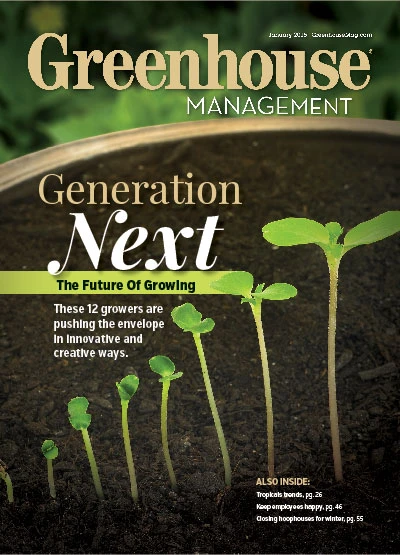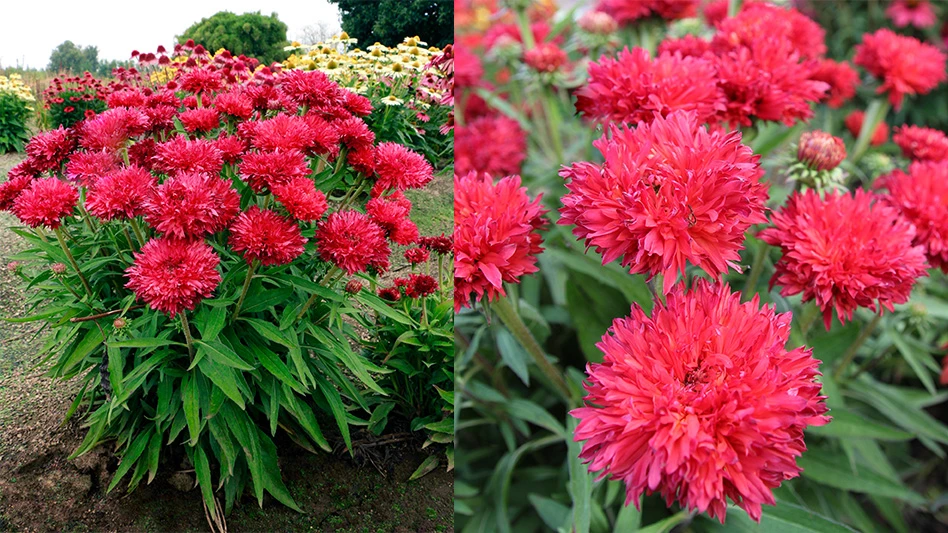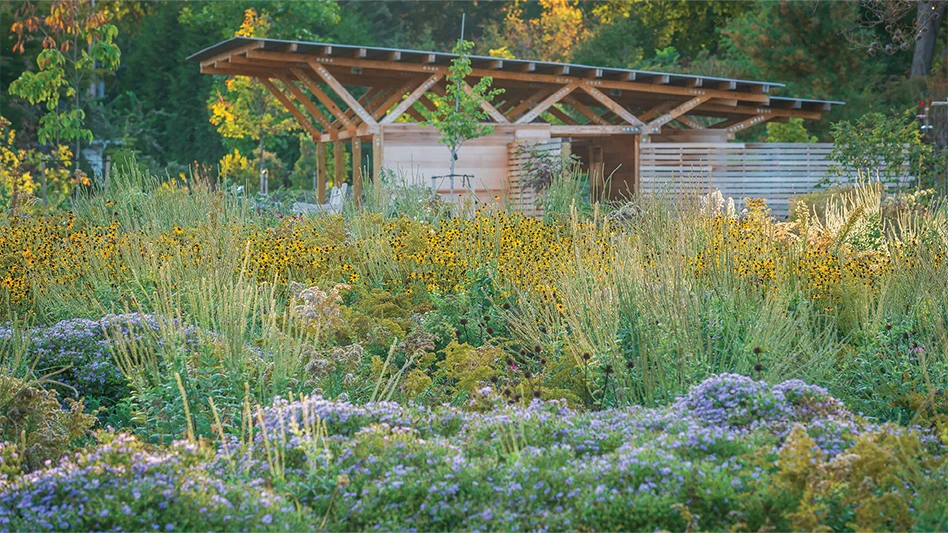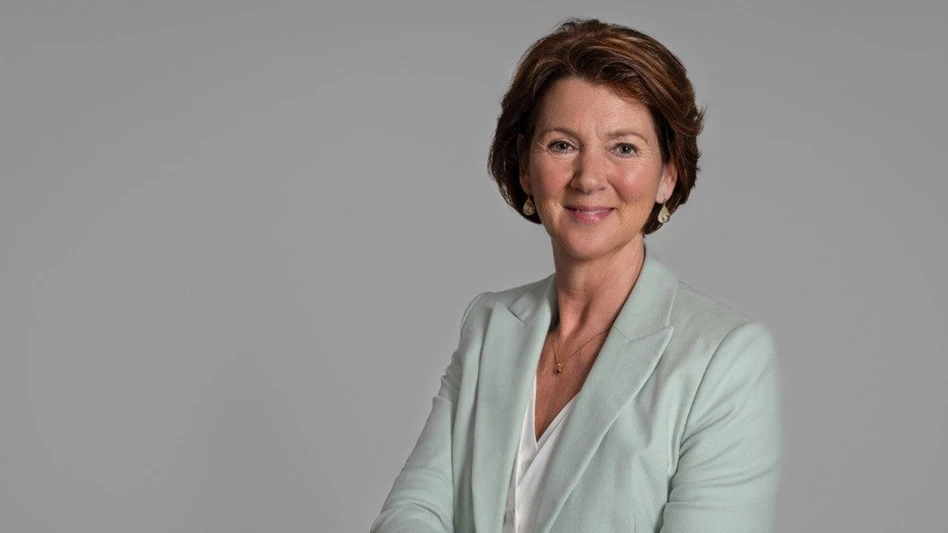
 I’ve written in previous articles about how customers have taken a turn toward decorating with plants, rather than growing plants. This is most evident with indoor plants. “Houseplants” are slowly becoming trendy again, especially with home decorators and 20-somethings. So what exactly is driving this trend?
I’ve written in previous articles about how customers have taken a turn toward decorating with plants, rather than growing plants. This is most evident with indoor plants. “Houseplants” are slowly becoming trendy again, especially with home decorators and 20-somethings. So what exactly is driving this trend?
If you scour the blog universe, you may find a common thread expressed amongst the “younger” crowd. Why haven’t they been interested in indoor plants up to now? Well, because “houseplants” reminded them too much of 70s and 80s macramé inspired décor. They also seem to associate them with work cubicles, which doesn’t evoke warm or fuzzy feelings but rather outdated relics and sterile cubicle fixtures. Yet, nostalgia gets the best of us all at some point.
There is burgeoning interest in plants in general amongst new gardening customers and a resurgence of 70s inspired interior design. Entrenched in technology with little outdoor time, many are starting to catch the “nature bug.” They not only realize that bringing a bit of the outdoors to the indoors is good for the soul, but it also takes their new style up a notch. I had a great conversation about indoor plant trends with Zenaida Sengo, interior merchandiser for Flora Grubb Gardens in San Francisco, Calif. and author of the recently published book Air Plants: The Curious World of Tillandsias, out last year via Timber Press. Zenaida is a young artist who developed a passion for plants that motivated her to seek employment in the floral and gardening industry. I’ve included parts of our conversation throughout the article. You can read the rest of our conversation online.
Form and function
One of the new design trends I’ve noticed is the use of very large plants as sculptural elements and focal points in interior design and decorating. Customers and designers are on the lookout for large, uniquely shaped plants that add interest and character to their spaces. Fiddle leaf fig, for example, is back in vogue. They are the sculptural plant de jour for interior stylists. You’ll see them featured across a number of home style blogs right now, along with Houzz.
 When I asked Zenaida what indoor plant trends she’d noticed, she confirmed my observations about fiddle leaf fig. “Last year there seemed to be an astounding amount of people seeking ‘oxygenators’ as a result of reading articles about houseplants improving air quality in the home. Ficus lyrata was in the spotlight due to its large surface area of their leaves and their tree-like appearance that aids in helping one feel closer to the outdoors. These waves of ambition geared towards improving air quality verify how environmental concerns affect plant trends greatly.”
When I asked Zenaida what indoor plant trends she’d noticed, she confirmed my observations about fiddle leaf fig. “Last year there seemed to be an astounding amount of people seeking ‘oxygenators’ as a result of reading articles about houseplants improving air quality in the home. Ficus lyrata was in the spotlight due to its large surface area of their leaves and their tree-like appearance that aids in helping one feel closer to the outdoors. These waves of ambition geared towards improving air quality verify how environmental concerns affect plant trends greatly.”
How are your botanical styling skills?
So, what exactly is botanical styling? As I see it, it’s the “new thing.” I asked Zenaida to describe how she defines this new movement. “Botanical styling is creating another context with or within plants other than the life and energy of the plants themselves. The aesthetics of plants, plant vessels and plant material are used to create a feeling, mood or environment. Similarly, the environment chosen to surround a plant, even when minimal and stark, will alter the way we interpret that plant.”
And you thought people just wanted to grow plants. Botanical styling is about creating a mood, using plants as a medium. It’s art, y’all.
Bohemian style
 “The terrarium popularity boom that hit a couple years ago, that is ceasing to wane little, if at all”, Zenaida said, “I noticed a new type of plant decorating evolving. I’m not sure when it happened, but it seems as though overnight an explosion of wall hanging textile art, macramé plant hangers and hand-thrown ceramic pots have blanketed the design world amongst social media. Previously, if I came across a photo with a basic Philodendron in a macramé it meant I was looking through one of my vintage copies of Sunset magazine. Basic leafy houseplants are on the rise and are frequently seen among designers that favor hand-crafted, local and bohemian style.”
“The terrarium popularity boom that hit a couple years ago, that is ceasing to wane little, if at all”, Zenaida said, “I noticed a new type of plant decorating evolving. I’m not sure when it happened, but it seems as though overnight an explosion of wall hanging textile art, macramé plant hangers and hand-thrown ceramic pots have blanketed the design world amongst social media. Previously, if I came across a photo with a basic Philodendron in a macramé it meant I was looking through one of my vintage copies of Sunset magazine. Basic leafy houseplants are on the rise and are frequently seen among designers that favor hand-crafted, local and bohemian style.”
Fashion and plants go hand in hand.
Succulent style
Succulents as stylish décor is a trend that doesn’t seem to be slowing down either.
Customers are drawn not only to the contemporary sculptural look of succulents, but also their ease of care. Succulents are forgiving when it comes to watering. Dry terrariums are the favored way to display succulents. Plants like echeveria, graptophyllum and haworthia are favored for their foliage colors and shapes. You’ll often find photos on blogs and social media depicting these plants featured in unique handmade pottery or contemporary vessels. Yet, not all succulents are adapted to the low-light indoor conditions most apartment dwellers have to offer. There is an opportunity to promote lower-light succulents such as turgid haworthia, gasteria, crassula and the like.
Keep it breezy
Air plants continue to grow in popularity as decorative features for homes and events. Garden retailer Flora Grubb has helped drive this trend with her continually evolving “Thigmatrope,” a simple metal cradle made to hold Tillandsias and other air plants as decorative items. Her slick and stylish photography also goes a long way when it comes to selling the style. Zenaida’s book is a contemporary and charming look at a group of plants that are growing in popularity with Independent Garden Center (IGC) customers. Pick up a copy if you want to see the present and future of interior botanical styling.
What drove Flora Grubb to create unique solutions both in the garden center, and the book, was that customers needed simple solutions for how to display Tillandsias as decor. “Their ‘soilessness’ threw customers for a loop. Without soil and a pot, they had no idea how to bring air plants into their home, how to display or care for them.” Challenges are usually opportunities in disguise.
 I asked Zenaida what she felt was driving customers to buy indoor plants. “Where I encounter the most enthusiasm from my customers purchasing houseplants is almost always when I’ve assisted them in creating something themselves by combining a few artful objects they like.” It’s not just about possessing or growing the plant anymore, it’s about using the plants as ingredients combined with other artful objects to create a particular style or mood.
I asked Zenaida what she felt was driving customers to buy indoor plants. “Where I encounter the most enthusiasm from my customers purchasing houseplants is almost always when I’ve assisted them in creating something themselves by combining a few artful objects they like.” It’s not just about possessing or growing the plant anymore, it’s about using the plants as ingredients combined with other artful objects to create a particular style or mood.
As you can see, there’s nothing about these indoor plant trends that says “commodity.” Indoor plants are being viewed as pieces of art. When was the last time you considered your inventory as artwork? If it’s been a while, or perhaps never at all, then now’s a great time to step back and consider a new perspective for your product. If your customers are placing a higher value on your creations, shouldn’t you?

Explore the January 2015 Issue
Check out more from this issue and find your next story to read.
Latest from Greenhouse Management
- Grant awarded to test western U.S. wood species for use as wood fiber potting substrate
- Pennsylvania Horticultural Society announces 2025 Gold Medal Plant winners
- Oasis Grower Solutions announces new Southeast territory sales manager
- A nation of gardeners: A history of the British horticulture industry
- Last Word with Angela Labrum, Bailey Nurseries
- Iowa plant supplier Plantpeddler building retail complex
- This month's Greenhouse Management magazine is about native plants and sustainability
- The HC Companies, Classic Home & Garden merge as Growscape





